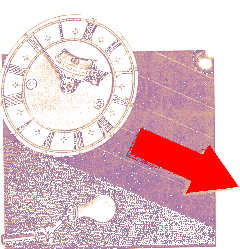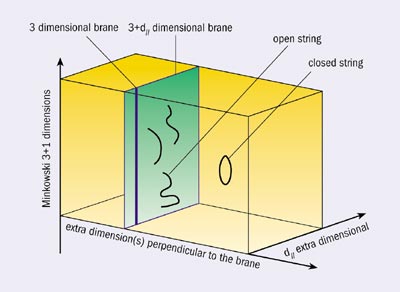Thu 5 Mar 2009
Is time immutable, or is it subjective? Philosophers have debated the nature of time, and whether it is intrinsically ordered and has tense. I have devised a mind experiment to show that time depends not only on the observer, but the observer’s position, that before, after and simultaneous are subjective.
Visualize two observers on opposite sides of a town, one north, one south. Both have clocks that were synchronized, and the observers moved slowly apart, so that relativistic effects on their clocks is insignificant, and flash detectors connected to the clocks to properly record the time of lightning flashes.
A storm comes up, and a lightning stroke hits in the middle of the town. The two observer’s flash detectors record the time of the flash, and agree on the time. The light from the flash travels to the flash detectors at the speed of light, producing a time delay of approximately 3.33 microseconds per kilometer. Lets say the the observers are 6 km apart so the delay from the stroke until the observers detect it is 10 microseconds, and both of them agree on the time of the lightning stroke.
Lets now assume that there are two lightning strokes, one near the north observer and the other near the south observer, and from the “god’s eye view” (lets say, from the point of view of an astronaut on the moon) the north stroke took place at Time = T and the south stroke took place at Time = T + 5 us. “God” would say that the north stroke took place first. The north observer would agree, but would claim that the south stroke took place 25 microseconds before the south stroke.
The south observer would disagree, the south stroke took place 15 microseconds BEFORE the north stroke!
The speed of light is the limit of the rate of information flow in the universe, and is the basis for the visualization of the “time cone” where occurances at a distance from an observer are experienced at a later time than it would have been experienced by a proximate observer (more…)



 String theory postulates ten or eleven dimensions, only three of which we can “travel” in. Time is a fourth dimension that we experience “now” and can experience “the past” through memory, but we have no knowledge of “the future”.One could say that we traveling in only one direction on the time dimension, and cannot reliably control our transit through time. (Although when one is bored, time certainly approaches stopping!)The other six or seven dimensions are often referred to being “curled up” in a microscopic manner so that we cannot experience them. This is not something that is intuitive, and is tough to keep straight.
String theory postulates ten or eleven dimensions, only three of which we can “travel” in. Time is a fourth dimension that we experience “now” and can experience “the past” through memory, but we have no knowledge of “the future”.One could say that we traveling in only one direction on the time dimension, and cannot reliably control our transit through time. (Although when one is bored, time certainly approaches stopping!)The other six or seven dimensions are often referred to being “curled up” in a microscopic manner so that we cannot experience them. This is not something that is intuitive, and is tough to keep straight.